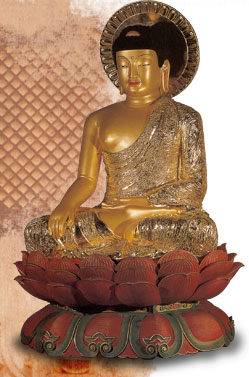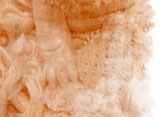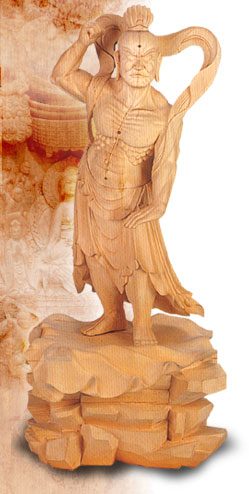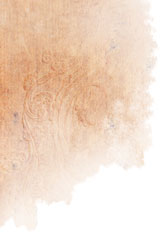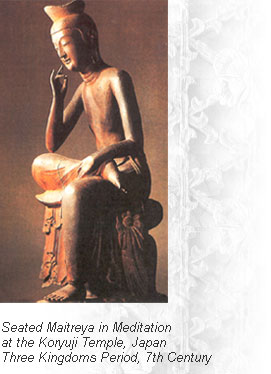 The
Seated Maitreya in Meditation, collected by the Koryuji Temple
in Kyoto, Japan, (and designated The
Seated Maitreya in Meditation, collected by the Koryuji Temple
in Kyoto, Japan, (and designated
 as National Treasure No. 1 of Japan), is often cited as the most archetypal example of Korean wood
as National Treasure No. 1 of Japan), is often cited as the most archetypal example of Korean wood
 carved Buddha statues still remaining. With its graceful countenance and enigmatic smile, calm stance,
carved Buddha statues still remaining. With its graceful countenance and enigmatic smile, calm stance,
 fine display of the wood’s natural grain and the modest, delicate figurative form, this figurine is widely
fine display of the wood’s natural grain and the modest, delicate figurative form, this figurine is widely
 regarded as the greatest masterpiece of all Buddha images created in Asia.
regarded as the greatest masterpiece of all Buddha images created in Asia.
 This image of Maitreya made by a Korean sculptor during the This image of Maitreya made by a Korean sculptor during the
 Three Kingdoms Period was sent to Japan in the 7th century. As
Three Kingdoms Period was sent to Japan in the 7th century. As
 a result, Japan built the Koryuji temple to enshrine this icon from
a result, Japan built the Koryuji temple to enshrine this icon from
 Korea, the merciful motherland of Japanese culture at the time,
Korea, the merciful motherland of Japanese culture at the time,
 and since then it has received the highest acclamations by numerous
and since then it has received the highest acclamations by numerous
 critics and artists around the world. In fact, German philosopher
critics and artists around the world. In fact, German philosopher
 Karl
Jaspers (1883-1969), said that the figure embodied Karl
Jaspers (1883-1969), said that the figure embodied
 the essence of Eastern culture, that no Buddhist image could
the essence of Eastern culture, that no Buddhist image could
 better symbolize peace or represent the ideal human figure,
better symbolize peace or represent the ideal human figure,
 not even ancient Greek or Roman statues. He concluded that
not even ancient Greek or Roman statues. He concluded that
 it was the perfection of art in its most exquisite form;
it was the perfection of art in its most exquisite form;
 it possessed a beauty so flawless, it could only have been
it possessed a beauty so flawless, it could only have been
 made by divine hands, not human.
made by divine hands, not human.
Unfortunately, many of these splendid wood carved Buddha statues
were destroyed during the many wars that erupted on the Korean peninsula
because of foreign invaders. Now, more than 1000 years later, Park Chan-soo
speaks with the spirits of the ancient master craftsmen who brought life to
these magnificent Buddha images, by understanding the souls of the
trees themselves.
A boy who carved wood as a means to elevate his family from poverty has now been reborn as a master wood
sculptor, as a man who lives and breathes for wood and instills his life and soul into his creations. One can even
smell the sweet fresh fragrance of wood emanating from his skin.
However, Park Chan-soo did not have a teacher or mentor from whom he could learn about the beauty of woodcarving
at a young age. His family was too poor for him to be interested in any other activity except collecting food. Born as the
 second son to slash-and-burn farmers, at the age of six he had to help support his family when his father second son to slash-and-burn farmers, at the age of six he had to help support his family when his father
 take care of Park’s elder brother who was studying in Seoul. Accompanying his mother to street markets take care of Park’s elder brother who was studying in Seoul. Accompanying his mother to street markets
 was a daily routine in his young life, as was cutting fodder for their cattle and collecting firewood before was a daily routine in his young life, as was cutting fodder for their cattle and collecting firewood before
 breakfast. His family was so deprived that he often went to school without a lunchbox and had to chew breakfast. His family was so deprived that he often went to school without a lunchbox and had to chew
 raw barley or wheat for nourishment. Wild fruits, such as mountain berries, were a luxury to him, as he often raw barley or wheat for nourishment. Wild fruits, such as mountain berries, were a luxury to him, as he often
 had to satisfy his hunger with much humbler ‘foods,’ such as the inner skin of pine trees and arrowroots. had to satisfy his hunger with much humbler ‘foods,’ such as the inner skin of pine trees and arrowroots.
 Park Chan-soo hadn’t even finished elementary school when the rest of his family joined his father in Seoul, Park Chan-soo hadn’t even finished elementary school when the rest of his family joined his father in Seoul,
 and he had to take a more active role in helping his family survive. He sold roast sweet potatoes and ice lollypops and he had to take a more active role in helping his family survive. He sold roast sweet potatoes and ice lollypops
 in the streets, delivered milk, and even cleaned public toilets. Being a child laborer, his wages were naturally half in the streets, delivered milk, and even cleaned public toilets. Being a child laborer, his wages were naturally half
 of adult’s, but he was more than thankful. Formal education was something that neither he nor his family could of adult’s, but he was more than thankful. Formal education was something that neither he nor his family could
 ever afford. ever afford.
 An important turning point in his life came in 1961 at the age of 14 when a relative living next door introduced An important turning point in his life came in 1961 at the age of 14 when a relative living next door introduced
 him to the Silla Woodcarving Company, which manufactured wooden sculptures such as well-known Korean
him to the Silla Woodcarving Company, which manufactured wooden sculptures such as well-known Korean
 pagodas, images of Buddha, Jesus Christ, the Virgin Mary and various animals, and then sold them to U.S.
pagodas, images of Buddha, Jesus Christ, the Virgin Mary and various animals, and then sold them to U.S.
 camps in Korea, major tourist destinations and foreign markets. The company offered him food and lodging
camps in Korea, major tourist destinations and foreign markets. The company offered him food and lodging
 in addition to wages, as well as the chance to help his poverty-stricken family put food on the table three
in addition to wages, as well as the chance to help his poverty-stricken family put food on the table three
 times a day. Park worked as a cleaner and errand boy, but soon he began to learn how to sculpt wood
times a day. Park worked as a cleaner and errand boy, but soon he began to learn how to sculpt wood
 on his own without his senior co-workers knowing. His motivation was that he believed admirable carving
on his own without his senior co-workers knowing. His motivation was that he believed admirable carving
 skills would bring him a handsome income.
skills would bring him a handsome income.
 The owner of the company, Kim Seong-su, was a versatile artist who specialized in various traditional The owner of the company, Kim Seong-su, was a versatile artist who specialized in various traditional
 crafts such as woodcarving, seal carving and the traditional ‘iron drawing,’ a kind of pyrography in which
crafts such as woodcarving, seal carving and the traditional ‘iron drawing,’ a kind of pyrography in which
 an image is burned onto the surface of a piece of wood. While it wasn’t easy to learn directly from Kim, who
an image is burned onto the surface of a piece of wood. While it wasn’t easy to learn directly from Kim, who
 had a number of apprentices under him already, Park’s natural diligence and sincerity helped him establish
had a number of apprentices under him already, Park’s natural diligence and sincerity helped him establish
a friendly relationship with his senior colleagues who soon began to teach him the basic skills of woodcarving, from
making and sharpening carving knives to choosing and preparing wood, as well as carving and painting. He learned
quickly and after three months he began to produce his own works, including images of an elderly man, an elderly woman,
a housewife carrying a water jar on her head and a porter with an A-frame on his back. It was an extraordinary result that
his commitment and assiduousness had brought him, and his dream came true when he was paid the generous wage
of a large bag of rice; he couldn’t sleep properly with the knowledge that he would probably be able to support his family
with his new skill.
View the master's works
|













